26 Popular Greek Snacks: Tasty Mediterranean Bites to Discover
Greek snacks represent a delightful culinary journey through centuries of rich Mediterranean flavors and cultural traditions.
Bite-sized delicacies capture the essence of warmth, hospitality, and community that define Greek cuisine.
Crafted with fresh ingredients and time-honored techniques, they offer more than just sustenance - they tell stories of family gatherings and regional pride.
Each snack carries a unique character, blending simplicity with remarkable depth of taste.
Ingredients like olive oil, herbs, and local produce transform ordinary foods into extraordinary experiences.
The diversity reflects Greece's geographical landscape, from coastal regions to mountainous terrains.
Let me guide you through these 26 mouthwatering creations that will transport your senses to the sun-drenched streets of Greece:
Popular Greek Snacks with Mediterranean Charm
Snack time in Greece is a celebration of sun-drenched flavors, with olives, cheeses, and little pastries filling every table. These bites are just right for sharing with friends or savoring during a lazy afternoon.
Fouskakia
Fouskakia are traditional Greek donuts bubbling with flavor from Skopelos and Alonnisos islands, crafted from a simple yeast-based batter that transforms into golden spherical treats.
Greek bakers create these fluffy delights by deep-frying dough until perfectly crisp and light.
Islands in northwest Aegean Sea claim these pastries as a regional specialty named after "fouska," meaning bubble.
Yeast and flour blend into a smooth mixture that fries quickly in hot oil.
Warm fouskakia emerge golden and puffy, ready for sweet embellishments.
Honey drizzles over the surface, adding rich sweetness to each bite.
Cinnamon or chopped nuts often crown these crispy treats.
Occasional ice cream scoops complement the warm, airy donuts for a complete dessert experience.
Tiropita
Tiropita are golden, flaky Greek cheese pastries crafted from delicate phyllo dough layered with creamy feta and eggs.
Greeks consider these triangular snacks a staple street food served in bakeries nationwide.
Traditional recipes trace tiropita's origins to Byzantine or Turkish culinary influences.
Bakers carefully brush each pastry with melted butter before baking to achieve a crispy, golden-brown exterior.
Tiropita serve as popular mid-morning snacks across Greece, replacing elaborate breakfast meals.
Small bakeries and street vendors sell tiropita as quick, satisfying handheld treats.
Mediterranean food cultures embrace these savory pastries as comfort food with deep cultural roots.
Kalamarakia Tiganita
Fried calamari represents a crispy Mediterranean seafood delicacy featuring tender squid rings and tentacles coated in seasoned flour and quickly deep-fried to golden perfection.
Greek restaurants often serve this popular appetizer as a meze plate with fresh lemon wedges and chopped parsley.
Seafood lovers appreciate its light, crunchy texture and mild oceanic flavor.
Restaurant menus across Mediterranean regions showcase this simple yet delicious dish.
Calamari requires quick frying to maintain its tender interior and crisp exterior.
Home cooks can easily recreate this classic recipe with minimal ingredients.
Salt, pepper, and flour form the basic seasoning for authentic preparation.
Restaurant-style calamari achieves maximum crispiness through high-temperature oil and brief cooking time.
Psomi Me Elaiolado
Pane e olio are classic Italian bread and olive oil combinations that celebrate simple, exceptional ingredients through elegant minimalism.
Mediterranean cultures have perfected this rustic dish by selecting premium extra virgin olive oil from renowned regions like Tuscany and Puglia.
Authentic preparations feature high-quality rustic breads such as ciabatta or focaccia, carefully sliced and sometimes lightly toasted to enhance texture and flavor.
Cold-pressed olive oil serves as the star component, offering rich, complex taste profiles and numerous health benefits.
Traditional serving styles involve pouring olive oil into small dipping dishes or drizzling it directly over bread slices.
Mediterranean families have enjoyed this straightforward yet sophisticated snack for generations as a simple appetizer or light meal.
Seasonal ingredients and personal techniques add subtle nuances to this timeless culinary tradition.
Sfakianopita
Sfakianopita are traditional Cretan cheese pies packed with rich cultural heritage and unique preparation methods.
Shepherds from Sfakia originally crafted these thin, crispy delicacies using simple ingredients like flour, olive oil, water, and salt.
Soft white whey cheese gets kneaded directly into the dough instead of being used as a filling.
Raki, a strong Cretan spirit, often adds extra flavor to the mixture.
Cooks carefully flatten the dough into thin, almost crepe-like circles before frying them until golden and crispy.
Rural Cretan communities have long enjoyed these versatile pies as a quick, satisfying meal.
Locals sometimes serve sfakianopita as a sweet or savory dish, depending on accompanying ingredients.
Spanakopita
Spanakopita are savory Greek pastries packed with spinach, feta, and herbs nestled in crispy, golden phyllo layers that crumble delicately with each bite.
Rural Greek farmers first created these portable pies as convenient field meals they could easily carry and consume during long workdays.
Ancient culinary traditions inspired this compact dish, which likely emerged during the Ottoman occupation around 400 years ago.
Mediterranean ingredients like fresh spinach, tangy lemon juice, and creamy feta cheese form its signature filling.
Phyllo dough provides a buttery, flaky exterior that transforms simple ingredients into an elegant treat.
Greek restaurants now serve spanakopita as appetizers, snacks, or light meals across different dining settings.
Travelers and locals alike enjoy this classic Greek pastry as a quick, satisfying meal with deep cultural roots.
Keftedakia
Keftedakia are succulent Greek meatballs bursting with Mediterranean flavors, crafted from a blend of ground pork and beef mixed with aromatic herbs like dill, oregano, and parsley.
These small, perfectly rounded morsels are traditionally fried in olive oil until golden brown and crispy on the outside while remaining juicy inside.
Greeks often serve keftedakia as popular picnic snacks, appetizers, or main course dishes that showcase the region's rich culinary traditions.
Stale bread or breadcrumbs help bind the meat mixture, creating a tender texture that makes these meatballs irresistibly light.
Eggs provide additional structure and moisture to the mixture, ensuring each bite is flavorful and cohesive.
Seasoned with classic Mediterranean spices, keftedakia reflect Greece's love for simple yet robust ingredients.
Chefs recommend topping the meatballs with a pat of butter and fresh lemon juice to enhance their natural taste.
Skopelitiki Tiropita
Skopelitiki tiropita embodies Skopelos island's culinary heritage through its signature spiral cheese pastry crafted from handmade phyllo dough.
Goat milk feta cheese from local farms provides the rich, tangy filling that defines this traditional Greek delicacy.
Olive oil plays a crucial role in both the dough preparation and the final cooking method, whether deep-frying or baking the pastry.
Skilled bakers carefully roll thin phyllo sheets, drizzle them with olive oil, and sprinkle crumbled feta before twisting the dough into its distinctive spiral shape.
Vinegar and salt enhance the dough's elasticity and flavor profile.
All-purpose flour forms the base of the pastry's delicate texture.
Generations of Skopelos residents have perfected this recipe, passing down techniques that celebrate the island's agricultural bounty.
Skordopsomo
Skordopsomo dominates Greek cuisine as a robust garlic bread variation packed with intense Mediterranean flavors.
Greeks transform simple bread slices into a crispy, aromatic delicacy by spreading a blended mixture of olive oil, garlic, salt, pepper, oregano, and basil.
Hot ovens quickly turn these bread slices golden brown, creating a crunchy exterior with a fragrant interior.
Mediterranean herbs provide an extra layer of complexity to this classic snack.
Olive oil ensures a rich, smooth texture that complements the sharp garlic notes.
Taverns frequently serve skordopsomo as an appetizer, though Greeks also enjoy it as a quick, satisfying snack.
Small gatherings and family meals often feature this simple yet flavorful bread.
Greeks consider skordopsomo a staple of casual dining experiences that celebrate fresh ingredients and straightforward preparation.
Fritoura
Fritoura are golden Greek pastry squares from Zakynthos island, featuring a crispy exterior created by deep-frying semolina batter until perfectly crunchy.
Semolina flour transforms into a thick, creamy mixture that gets poured into trays and sets before cutting into distinctive rectangular or diamond shapes.
Skilled island bakers carefully fry these pieces until they develop a rich, golden-brown color that signals perfect texture.
Cinnamon sugar generously coats each piece, adding a sweet, aromatic finish that enhances the dessert's flavor profile.
Traditional celebrations on Zakynthos frequently feature large batches of fritoura prepared in classic cauldrons.
Greeks serve these pastries as a beloved dessert during festive gatherings and special occasions.
Family members often help prepare the treat, passing down generations-old techniques.
Crispy, warm fritoura represent a delicious piece of Zakynthian culinary heritage.
Koulouri Thessalonikis
Koulouri Thessalonikis represents a beloved Greek street bread with circular sesame-crusted rings originating from Thessaloniki.
Greek refugees from Asia Minor introduced this simple wheat flour bread during early 20th-century migrations.
Bakers shape soft dough into rings before generously coating them with sesame seeds.
Street vendors across northern Greece sell these crispy, affordable snacks to locals and tourists.
Warm koulouri serves as a quick breakfast or midday hunger solution for many Greeks.
Each bread offers a satisfying crunch with nutty sesame flavor and soft interior.
Traditional preparation methods remain consistent, ensuring authentic taste and texture.
Kreatopita
Kreatopita is a savory Greek meat pie featuring layers of crispy phyllo dough wrapped around a rich ground meat filling that dominates regional cuisine.
Greeks enjoy this versatile pastry across different regions with unique local variations.
Meat blends typically include ground lamb or beef seasoned with oregano, parsley, and black pepper.
Regional recipes often incorporate additional ingredients like rice, leeks, or cheese to enhance flavor complexity.
Kreatopita serves as a hearty meal or appetizer that showcases traditional Greek culinary techniques.
Home cooks and bakeries prepare multiple versions reflecting family traditions and local ingredients.
Phyllo dough creates a flaky, golden-brown exterior that contrasts with the juicy meat interior.
Served warm, this pie represents a delicious snapshot of Greek home cooking.
Kalitsounia
Kalitsounia are small Cretan pastries bursting with rich Greek culinary heritage, featuring delicate unleavened dough wrapped around creamy mizithra cheese or sweet variations.
Originating from Crete's traditional kitchens, these versatile treats showcase regional ingredients and cooking techniques passed through generations.
Savory versions often include herbs and cheese, while sweet renditions incorporate honey or nuts for a delightful contrast.
Greek families prepare kalitsounia during festivals, celebrations, and everyday meals as a beloved snack that reflects the island's gastronomic culture.
Rural Cretan communities traditionally make these pastries using fresh local ingredients like homemade cheese and seasonal herbs.
Mediterranean cooking techniques influence their preparation, with careful folding and precise baking methods ensuring a perfect texture.
Small yet significant, kalitsounia represent more than just a food item - they embody Cretan hospitality and culinary traditions.
Alevropita
Crispy feta pie represents a traditional Greek delicacy originating from Epirus with a unique thin batter technique.
Wheat flour, milk or yogurt, and eggs form the base of this simple yet flavorful dish.
Greeks prepare the pie without leavening, creating a distinctive crisp texture.
Feta cheese generously sprinkled across the surface adds a tangy, salty dimension to each bite.
Regional bakers craft this pie using minimal ingredients that highlight the cheese's rich flavor.
Rural kitchens in Epirus have perfected this recipe through generations of careful preparation.
Rustic and straightforward, the pie reflects authentic Greek culinary traditions.
Mediterranean cooking principles shine through its uncomplicated yet satisfying composition.
Tomatokeftedes
Tomatokeftedes are savory Greek tomato fritters originating from Santorini, prized for their intense flavor and unique preparation using the island's special Tomataki Santorinis tomatoes.
Locals craft these crispy appetizers by combining diced tomatoes with chopped onions, fresh herbs, and zesty spices.
Feta cheese and grated zucchini often enhance the fritters' rich texture and taste.
Skilled cooks carefully drain excess tomato liquid to ensure a perfect crispiness when frying.
These golden-brown treats emerge from hot oil with a delightful crunch and aromatic Mediterranean profile.
Tourists and locals alike enjoy these fritters as a refreshing starter or light snack.
Simple ingredients and traditional techniques make tomatokeftedes a beloved Greek island specialty.
Kolokithopita
Kolokithopita are traditional Greek savory pies featuring crispy phyllo pastry wrapped around a creamy zucchini and feta cheese filling that showcases Mediterranean flavor combinations.
Greek home cooks typically craft this rustic dish using homemade phyllo pastry slightly thicker than commercial versions.
Zucchini and feta form the core filling, creating a rich and tangy mixture that balances soft vegetable textures with sharp cheese notes.
Layers of golden, buttery phyllo provide a satisfying crunch that contrasts with the smooth interior.
Greeks often serve kolokithopita as a light meal or appetizer during summer months when zucchini are abundant.
Family recipes pass down through generations, with each household maintaining unique preparation techniques.
Bakers can prepare the pie in different styles, including open-faced or fully enclosed versions that suit individual preferences.
Pitarakia
Pitarakia are savory cheese pastries originating from Milos island that showcase the Cycladic culinary tradition through their unique half-moon shape and delicate cheese-filled interior.
Local bakers craft these small pastries using a simple dough of flour, olive oil, onions, herbs, and water, carefully folding crumbled feta or manoura cheese with freshly ground pepper into each delicate pocket.
Traditional preparation involves rolling thin dough circles and carefully sealing the edges to create their signature crescent design.
Greeks often serve pitarakia as appetizers or light snacks during social gatherings and festivals.
Home cooks and island bakeries take pride in maintaining the authentic recipe passed through generations.
Mediterranean ingredients like fresh herbs and local cheese define their distinct flavor profile.
Summer festivals and family celebrations frequently feature these handmade pastries.
Small yet flavorful, pitarakia represent a beloved taste of Milos island's culinary heritage.
Melekouni
Melekouni are traditional Greek energy bars from Rhodes packed with exceptional nutritional benefits and rich Mediterranean flavors.
Sesame seeds form the primary ingredient, carefully blended with aromatic thyme honey for a robust, sweet profile.
Almonds, orange and lemon peels, and select spices enhance the snack's complex taste and texture.
Ancient Greeks valued these nutrient-dense bars as natural energy boosters during long journeys and physical labor.
Small rectangular or circular shapes characterize their classic presentation, making them convenient for quick consumption.
Weddings and religious celebrations often feature melekouni as symbolic treats representing prosperity and good health.
Greek island traditions have preserved this recipe for generations, passing down its preparation methods through family networks.
Tsouknidopita
Tsouknidopita is a rustic Greek pie packed with wild nettles nestled between crispy, golden phyllo layers.
Originating in rural Greek regions, this savory pastry transforms humble nettles into a delicious culinary treasure.
Wild nettles provide a unique, slightly earthy flavor that distinguishes this traditional dish from other Greek pies.
Feta cheese and aromatic herbs enhance the filling's complexity and depth.
Greek families often prepare tsouknidopita using locally foraged nettles, ensuring maximum freshness and flavor.
Home cooks carefully sauté or cook the nettles before layering them with delicate phyllo pastry.
Tsouknidopita serves as a versatile meal, suitable as an appetizer, snack, or light main course.
Pasteli
Pasteli are traditional Greek sesame bars packed with nutritional value and ancient culinary heritage.
Sweet honey binds crunchy sesame seeds into a simple yet satisfying treat originating in Greece thousands of years ago.
Mediterranean cultures have long considered these bars an essential energy source for travelers and workers.
Greeks produce pasteli in multiple textures ranging from crispy to chewy.
Factories now mass-produce these snacks across Greece, though traditional handmade versions still exist.
Nuts like almonds or pistachios frequently enhance the basic recipe.
Some variations include additional spices or herbs for complex flavor profiles.
Regional differences contribute to subtle variations in preparation and ingredients.
Rizogalo
Rizogalo, Greek rice pudding, are creamy rice desserts slow-cooked with milk until reaching a silky, luxurious texture that melts in your mouth.
Milk and rice simmer together, creating a smooth consistency enhanced by subtle vanilla and cinnamon notes.
Greeks traditionally serve this sweet comfort food chilled or warm as a versatile dessert or breakfast treat.
Classic recipes include whole milk, short-grain rice, sugar, and warming spices like ground cinnamon.
Generations have passed down this simple yet satisfying recipe through family kitchens.
Home cooks carefully stir the mixture to prevent burning and achieve perfect thickness.
Sfougato
Sfougato is a traditional Greek egg-based dish resembling a crustless quiche with a unique spongy texture and complex flavor profile.
Greek families create this versatile specialty by blending beaten eggs with fresh herbs, vegetables, and regional cheeses like feta and kefalotyri.
Bakers prepare sfougato in shallow baking dishes, allowing ingredients to meld and create a golden, puffy surface.
Greeks typically season the mixture with olive oil, salt, and pepper for enhanced taste.
Breadcrumbs or crackers occasionally add extra texture to the dish.
Ancient Greek culinary traditions inspired its name, derived from the word "sfougari" meaning sponge.
Mediterranean cuisine celebrates this simple yet satisfying egg-based delicacy as a versatile meal suitable for breakfast, lunch, or dinner.
Fetoydia
Fetoydia merges Greek breakfast traditions with French toast techniques, creating a rich Mediterranean morning delicacy.
Bread slices absorb milk before getting dipped in beaten eggs and fried in olive oil until golden brown.
Mediterranean kitchens traditionally prepare this dish using fresh or slightly stale bread for optimal texture.
Greeks enhance flavor by coating the toast with honey, cinnamon, or powdered sugar after frying.
Olive oil provides a distinct regional touch that separates fetoydia from other French toast variations.
Families often serve this simple yet satisfying breakfast during leisurely weekend mornings.
Home cooks prefer using thick bread slices for maximum absorption and crispy edges.
Each serving offers a warm, comforting start to the day with authentic Greek culinary simplicity.
Melintzanopita
Melintzanopita is a rustic Greek pie bursting with roasted eggplant nestled between crispy phyllo layers that captures Mediterranean cuisine's bold flavors.
Originating in Greece, this savory pastry combines tender eggplant with crumbled feta cheese and aromatic herbs like oregano and parsley.
Skilled bakers carefully layer thin phyllo sheets to create a flaky, golden-brown exterior that contrasts with the rich, creamy interior.
Home cooks often prepare this dish for family gatherings or casual meals, serving it warm or chilled as an appetizer or light main course.
Mediterranean kitchens celebrate this versatile pie as a testament to simple, fresh ingredients.
Traditional preparation involves roasting eggplant until soft and smoky, then mixing it with complementary cheeses and seasonings.
Lalagites
Lalagites are crispy Greek pancakes originating from Lemnos island, featuring a versatile batter fried to golden perfection in olive oil.
Greeks craft these delicate pancakes using simple ingredients like flour, eggs, water, and baking powder, creating thin or round versions with regional variations.
Traditional Lemnian recipes elevate the basic recipe by incorporating fresh mint leaves and crumbled kalathaki cheese for added complexity.
Skilled home cooks often enhance the pancakes with a drizzle of local thyme honey and a sprinkle of cinnamon.
Each lalagite offers a perfect balance of crispy exterior and soft interior, reflecting the island's culinary traditions.
Versions range from fritter-like to crepe-thin, showcasing the dish's adaptability across different Greek communities.
Regional differences include sugar or salt additions, with some recipes introducing yeast or milk to the batter.
Lalagites serve as a versatile breakfast, snack, or light dessert enjoyed throughout Greece.
Fig Pie (Sykomaida)
Sykomaida is a rich Corfiot fig cake bursting with traditional Greek island flavors and protected by European Union designation.
Dried figs form the cake's hearty base, blended with ground almonds, ouzo, cinnamon, cloves, and fennel seeds.
Artisan bakers carefully dry fresh figs under Mediterranean sunlight before grinding them into a dense, sweet mixture.
Each ingredient contributes a complex layer of flavor reflecting Corfu's agricultural heritage.
Craftspeople shape the mixture into round or rolled forms that can be sliced and served.
Local families have passed down sykomaida recipes through generations, preserving their culinary traditions.
European Union recognition in 2009 highlighted the cake's cultural significance.
Residents of Corfu consider sykomaida a cherished symbol of their regional gastronomy.
What Ingredients Define the Flavors of Greek Snacks?
Greek snacks burst with fresh, bold flavors thanks to a handful of key ingredients that capture the essence of the Mediterranean:




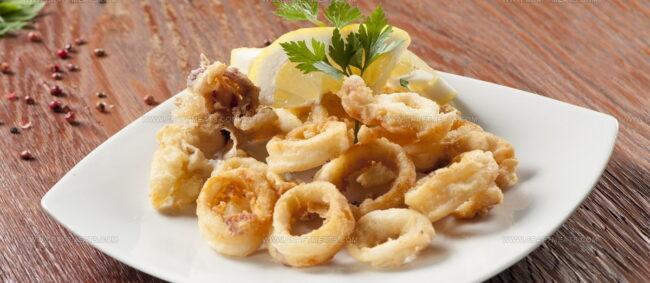
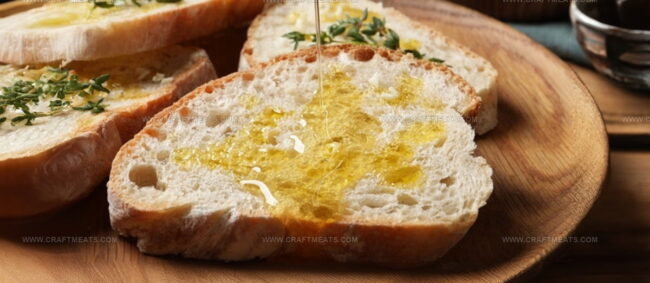
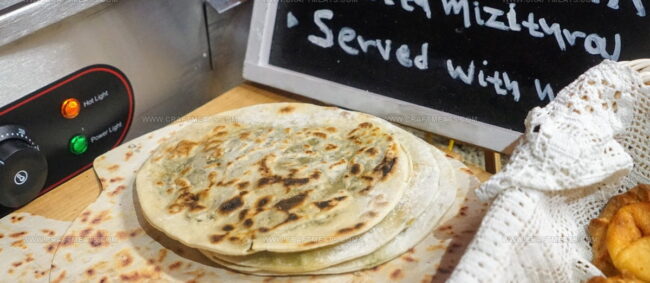
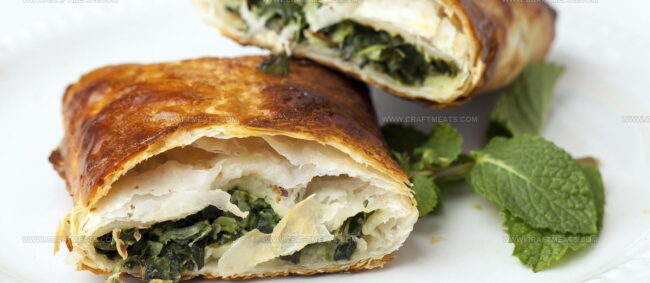
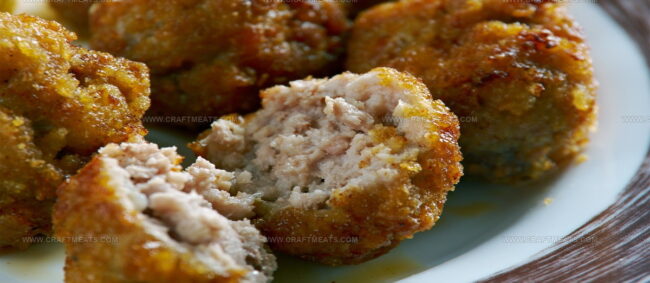


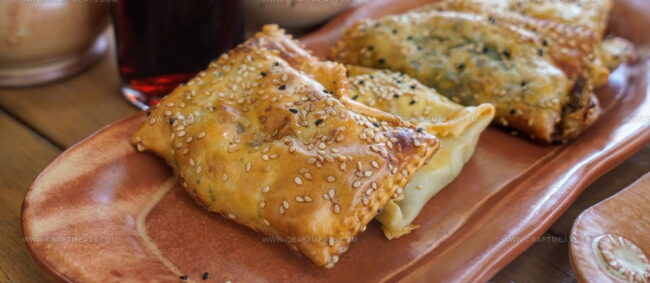
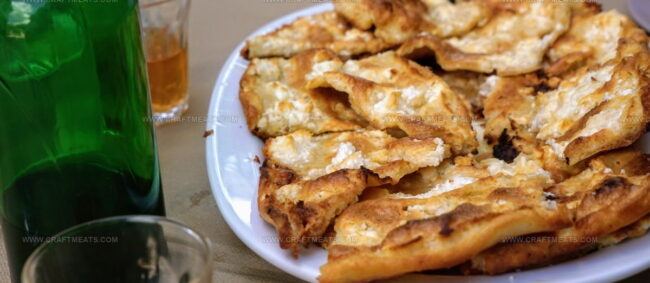
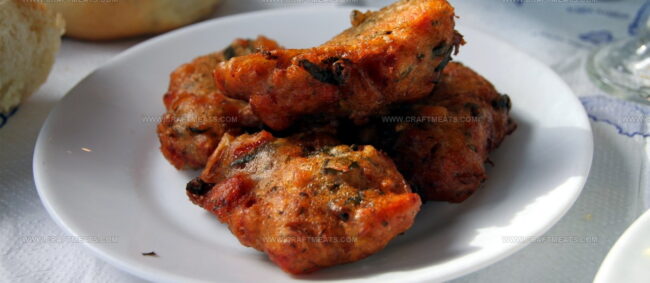
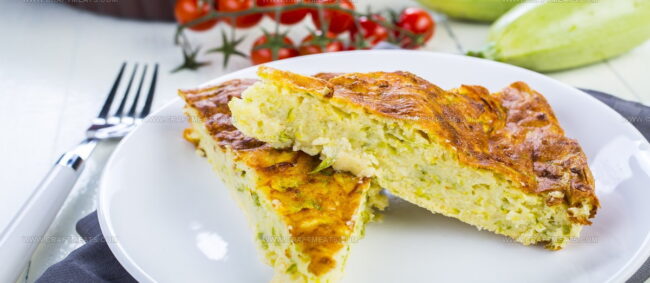


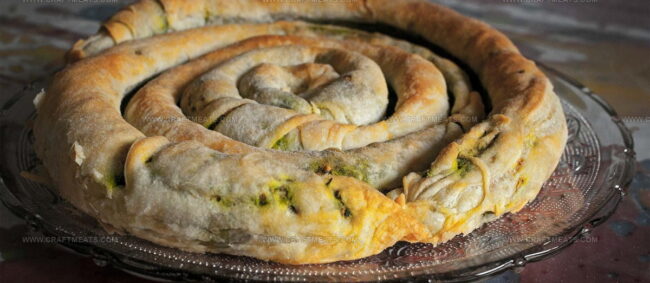


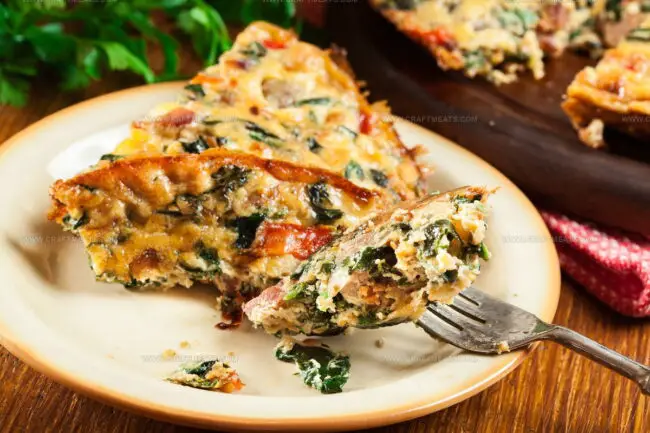
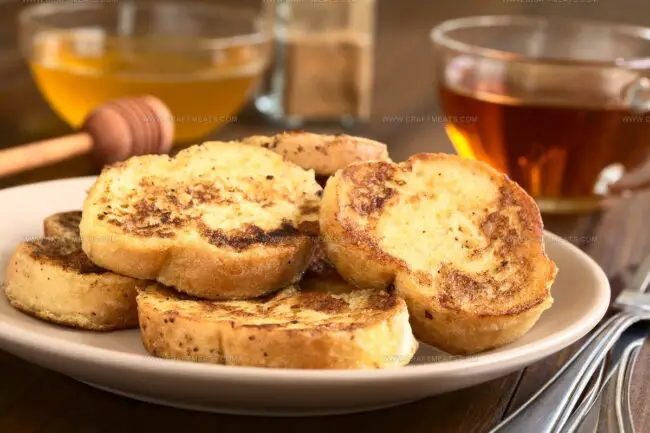
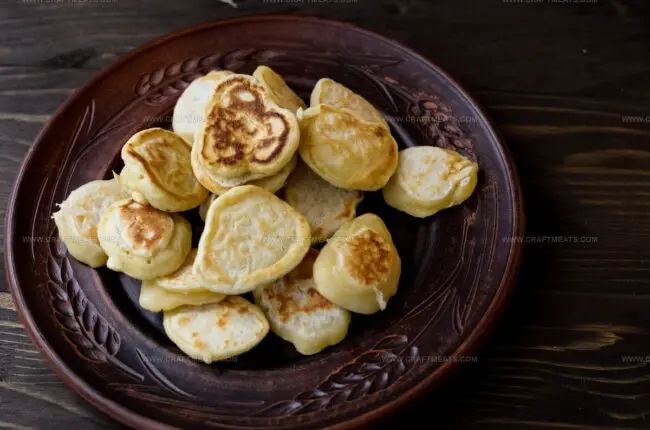

Isabella Rossi
Founder & Culinary Content Creator
Expertise
Recipe Development, Traditional Irish and European Cuisines, Food Styling and Photography, Culinary Education
Education
Dublin Institute of Technology (DIT) – School of Culinary Arts and Food Technology
Ballymaloe Cookery School
Liam is the voice behind many of Craft Meats’ most flavorful features. With roots in Dublin’s smoky barbecue scene and a culinary degree from the Dublin Institute of Technology, he brings time-tested cooking techniques to life.
His training at Ballymaloe Cookery School sharpened his farm-to-table approach, giving him a deep respect for every ingredient he writes about.
He’s not about overcomplicating the process, just helping you cook meat that’s worth talking about. When he’s not writing or grilling, he’s out foraging or nerding out on regional spice blends to add to his next recipe.